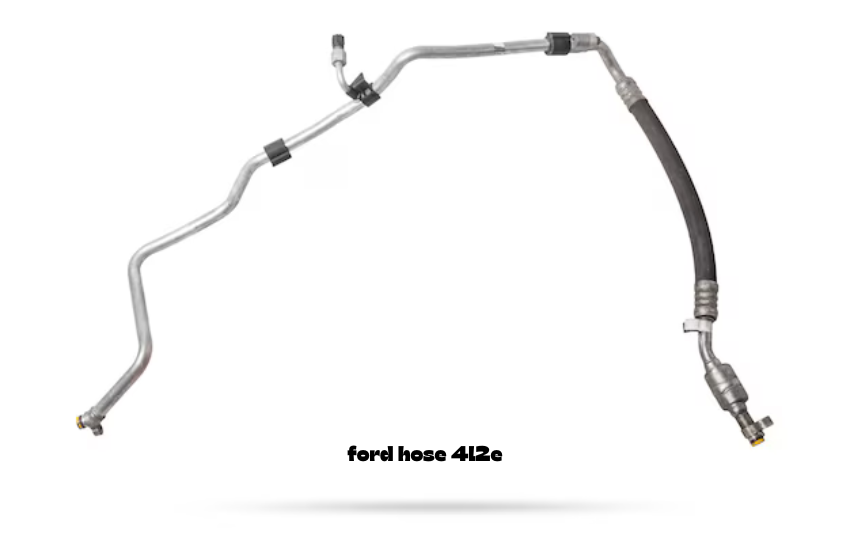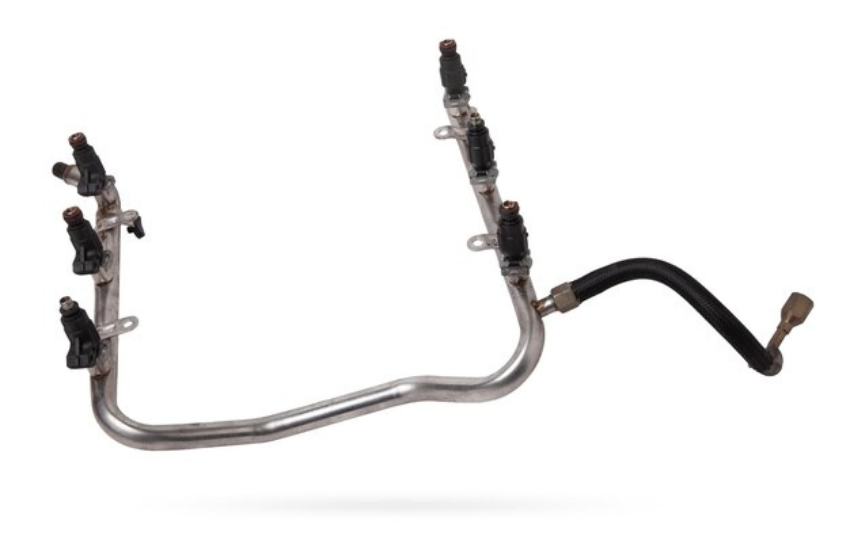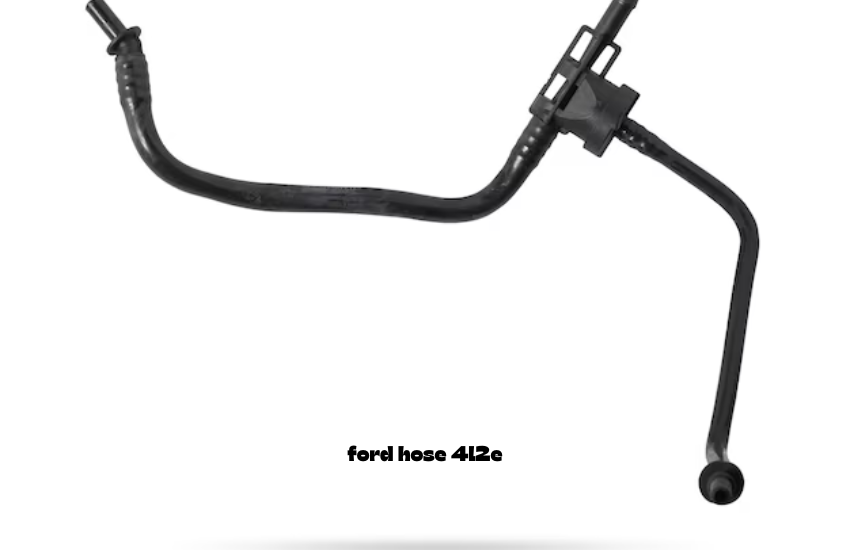The ford hose 4l2e is a part found in many Ford vehicles, essential for directing fluids within the engine system, ensuring performance and reliability. A crucial component in specific Ford engines, it plays an essential role in maintaining fluid flow and pressure. Whether you’re a car enthusiast, a DIY mechanic, or a Ford owner, understanding the Ford Hose 4L2E can help ensure your vehicle’s long-term functionality and performance.
Introduction to Ford Hose 4L2E
The 4L2E hose, designed by Ford, is found primarily in certain models of Ford vehicles. It functions as a conduit for essential fluids, often in systems like cooling or fuel. Since its introduction, it’s been used in various models, providing reliable service for fluid transfer needs in high-temperature and pressure environments.
Specifications of Ford Hose 4L2E
Understanding the specifications of the Ford Hose 4L2E can help in identifying its applications, compatibility, and when it might need replacement.
Material Composition
The Ford Hose 4L2E is typically manufactured from durable materials like reinforced rubber or specialized polymers. This composition provides flexibility, resistance to high temperatures, and the ability to handle significant pressure without breaking down.

Size and Dimensions
The hose dimensions can vary depending on the specific Ford model in which it’s used. However, it generally maintains a standard diameter suited for common fluid transfer systems within the engine.
Pressure and Temperature Tolerance
Ford hoses are designed to handle high temperatures and pressures common in engine operations. The 4L2E can withstand the heat generated by the engine and the pressure exerted by fluid flow, ensuring consistent performance.
Applications of Ford Hose 4L2E
The Ford Hose 4L2E is versatile and supports several crucial systems in Ford vehicles.
Primary Uses in Ford Vehicles
The hose is typically found in fuel, cooling, or emission control systems, directing essential fluids efficiently. In cooling systems, for instance, it helps in maintaining the engine temperature by allowing coolant flow.
Compatible Ford Models
The 4L2E hose is compatible with specific Ford models. It’s commonly found in models like Ford F-150, Ford Explorer, and other mid-sized vehicles that require durable hoses for fluid transfer.
Common Issues with Ford Hose 4L2E
While durable, this hose may encounter issues over time, particularly as it endures high temperatures and pressures daily.
Signs of Wear and Tear
Typical signs include cracks, stiffness, bulging, or visible leaks. Any of these signs can affect performance and may require immediate attention.
Causes of Hose Failure
Common causes of failure include prolonged exposure to engine heat, chemical breakdown from fluids, and physical abrasion. Poor installation can also contribute to premature wear.
How to Inspect Ford Hose 4L2E
Regular inspection is critical for spotting early signs of wear.
Visual Inspection Techniques
Performing a visual inspection for cracks, bulges, and leaks can quickly determine the hose’s condition. It’s best to conduct these checks during routine oil changes or maintenance.
Signs of Internal and External Damage
Beyond external damage, internal wear may occur due to high-temperature exposure, affecting the hose’s integrity. Any inconsistencies or abnormal fluid smells should prompt further investigation.
Replacing Ford Hose 4L2E
Replacing the Ford Hose 4L2E can restore performance and prevent engine issues.
Tools Needed for Replacement
To replace the hose, gather essential tools like pliers, a wrench, a screwdriver, and a replacement 4L2E hose. Safety equipment such as gloves and goggles is also recommended.
Step-by-Step Replacement Guide
- Ensure Engine Cooldown: Allow the engine to cool before handling.
- Disconnect Power: Remove battery connections for safety.
- Locate and Remove Old Hose: Loosen clamps and carefully detach the old hose.
- Install New Hose: Fit the new hose in place and secure with clamps.
- Test for Leaks: Once installed, check for leaks by running the engine briefly.
Precautions and Safety Measures
Work in a well-ventilated area, use safety equipment, and avoid working near hot engine parts.
Maintenance Tips for Ford Hose 4L2E
Regular maintenance can prolong the life of your Ford Hose 4L2E.
Cleaning and Preventive Care
Rinse the hose regularly to prevent debris buildup and check for damage. Regularly cleaning can improve longevity.
When to Replace for Optimal Performance
Replacement intervals depend on driving conditions, but a good rule of thumb is every 4-6 years or when signs of wear appear.
OEM vs. Aftermarket Ford Hose 4LE
When replacing the hose, you’ll have the option between OEM and aftermarket parts.
Advantages of OEM Parts
OEM hoses meet Ford’s specifications, ensuring compatibility and performance. They often come with a warranty for added assurance.

Choosing the Right Aftermarket Option
For those on a budget, aftermarket hoses are often cost-effective. However, select reputable brands to avoid quality issues.
Cost of Replacing Ford Hose 4LE
Costs vary based on model and location, with replacement parts and labor being the primary factors.
Factors Affecting Cost
The hose price and labor costs for installation contribute to the overall cost. OEM hoses are usually pricier than aftermarket ones.
Where to Buy Replacement Parts
Ford dealerships, online retailers, and auto parts stores all carry Ford Hose 4L2E.
Frequently Asked Questions (FAQs)
Q1: What vehicles use the Ford Hose 4LE?
A1: Commonly used in Ford F-150, Ford Explorer, and similar models, though exact compatibility can vary.
Q2: How often should I replace the Ford Hose 4LE?
A2: Replacement every 4-6 years is recommended, or sooner if wear signs are observed.
Q3: Can I replace the hose myself?
A3: Yes, with the right tools and basic knowledge, but professional help ensures proper installation.
Q4: What signs indicate that the hose needs replacing?
A4: Cracks, bulges, and leaks are key indicators. Any decrease in fluid performance should prompt an inspection.
Q5: Are aftermarket hoses reliable?
A5: High-quality aftermarket hoses can be reliable, but choosing a trusted brand is essential.
Q6: Where can I find a Ford Hose 4LE?
A6: Available at Ford dealerships, auto parts retailers, and online stores specializing in Ford parts.


